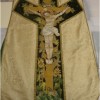
Ayla Lepine, “On the Founding of Watts & Co., 1874”
In 1874 three prominent Victorian architects founded the ecclesiastical and domestic fittings and furnishings business Watts & Company: George Gilbert Scott junior, Thomas Garner, and George Frederick Bodley. The firm was established within a cultural climate of transition. By the 1870s, the Gothic Revival and the Aesthetic Movement began to overlap and merge. Sacred and secular architectural and decorative impulses increasingly shared common traits. These aesthetic shifts were accompanied by major debates in British religious and political spheres. In the foundations of Watts and Company, beauty and labor were interlaced with religious controversy, political reform, and commercial ambition. Begun when William Morris’ own decorative arts firm, begun in 1861, underwent drastic restructuring, and in the same few months that Parliament debated High Anglican rituals, and church practices could land clerics in prison, Watts and Company’s incorporation was a bold move for the three architects. What had its roots in radicalism and avant-garde style set the tone for the establishment tastes by the end of the century
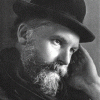
Jill Galvan, “Tennyson’s Ghosts: The Psychical Research Case of the Cross-Correspondences, 1901-c.1936”
The cross-correspondences are a well-known episode in the history of psychical research, a field that arose in the late Victorian period and was devoted to the scientific investigation of paranormal phenomena. Extending over three decades, this case was a study of possible communication from the other world. Psychical researchers collected and compared thousands of automatic writings (texts supposedly channeled unconsciously and authored by the spirits) that, while generated by several mediums, all seemed to cohere, as if spiritually orchestrated, in their tightly corresponding allusions to classical and literary lore. This essay chronicles the origins of and people involved with the cross-correspondences, together with their two most significant alleged spirit communications, the “Palm Sunday” and “Plan” messages. It then goes on to examine the patterns of allusion in the automatic writing, in order to claim the key role of Victorian poetry as constructive material: the messages, as deduced by psychical researchers, appear to be built on the stories and characters of writers like Alfred Tennyson. It was arguably this appeal to familiar literary elements of the previous century that seemed to bring the ghosts in the case to life; thus a literary analysis of the cross-correspondences can help us to understand their power to move their investigators to belief. On this reading, the cross-correspondences, though contemporaneous with the rise of modernism and with events like the Great War, are clearly a part of the “long nineteenth century.” As such they usefully emphasize the fluidity of history itself, frustrating conventional distinctions between the Victorian and the modern.
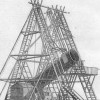
Kathleen Lundeen, “On Herschel’s Forty-Foot Telescope, 1789”
On 28 August 1789, William Herschel began exploring the cosmos with his forty-foot telescope, which would remain the largest in the world for the next half century. Though the giant instrument gave Herschel and others greater access to the deep space of the cosmos, its cultural impact extended well beyond the realm of science.
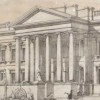
Jason R. Rudy, “On Literary Melbourne: Poetry in the Colony, ca. 1854”
Few in the mid-nineteenth century would have imagined the British colonies in Australia as spaces for poetic composition, and yet reproducing culture abroad was crucial to the British colonial project. This essay explores some of the challenges faced by poets in colonial Melbourne, a city at first more interested in gold digging than literary composition.
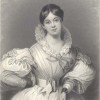
Angela Esterhammer, “1824: Improvisation, Speculation, and Identity-Construction”
Literature and cultural history of the year 1824 reflect the prominence of improvisation and speculation as ideologies and modes of action. Both these terms suggest hasty action that lacks a solid or profound basis, that responds to contingencies and constructs its own (pseudo-)reality. This article explores modalities of improvisation and speculation by focusing on the interrelated themes of ephemerality, appearance, and identity-construction in texts and performances of the year 1824, including influential works of poetry and fiction, the burgeoning periodical press, and new forms of theatrical entertainment.
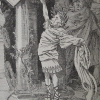
Linda Peterson, “On the Appointment of the ‘Poet Laureate to Her Majesty,’ 1892-1896”
On 6 October 1892 Alfred, Lord Tennyson, died at Aldworth, his home in Surrey; six days later, the Poet Laureate was buried in Westminster Abbey. This essay explores the controversy in the periodical press that ensued over the appointment of his successor, the debate over whether the office should represent a royal or national appointment, and the aftermath of the choice of Alfred Austin as “Poet Laureate to Her Majesty” in January 1896.
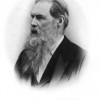
Peter Melville Logan, “On Culture: Edward B. Tylor’s Primitive Culture, 1871″
Edward B. Tylor’s Primitive Culture articulates one of two major theories of culture to emerge around 1870. His theory defines culture in descriptive terms as the “complex whole” that makes up social ideas and institutions, and in this it helped to establish anthropology as a recognized science. Tylor’s ideas were closely related to those published about the same time by Matthew Arnold, who defined culture as a humanist ideal that society should strive for.
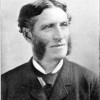
Peter Melville Logan, “On Culture: Matthew Arnold’s Culture and Anarchy, 1869″
Matthew Arnold’s Culture and Anarchy spells out one of two major theories of culture to emerge around 1870. His theory defines culture in idealist terms, as something to strive for, and in this it helped to shape twentieth-century thinking about the value of the humanities in higher education. Arnold’s ideas were closely related to those of Edward B. Tylor, who proposed the descriptive theory of culture adopted by the emerging discipline of anthropology at about the same time.
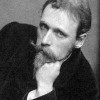
Imogen Hart, “On the Arts and Crafts Exhibition Society”
The first exhibition of the Arts and Crafts Exhibition Society made new and ambitious claims for the public significance of decorative art. This article analyses the innovations and methods of the Society while also examining the conflicting motivations and ideological tensions within it. Instead of seeing the Society as straightforwardly representative of the Arts and Crafts movement and the activities of William Morris, I consider how it fits into a broader history of Victorian art and design, revealing its relationships with the Royal Academy of Arts and the Schools of Art system for training industrial designers.
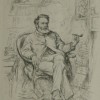
Jonathan Farina, “On David Masson’s British Novelists and their Styles (1859) and the Establishment of Novels as an Object of Academic Study”
This essay shows how the publication of David Masson’s British Novelists and their Styles, the first monograph on fiction by a professor of English literature, institutionalized the study of fiction by representing novels as material evidence of otherwise ephemeral, ideological, unconscious, or otherwise invisible “currents” of history. Other Victorian theories of fiction were more manifestly influential in establishing the formalist modes of fictional analysis and narratology that have since dominated the discipline, but Masson’s work nevertheless exhibits investments in feminism, cosmopolitanism, liberalism, statistics, ideology, and history that uncannily anticipate the interests of modern scholars of Victorian fiction. However generically unfamiliar it might look, then, Masson’s work marks the emergence of the cultural interests, disciplinary objectives, and other conditions of representation that underwrite academic criticism as we now know it.
